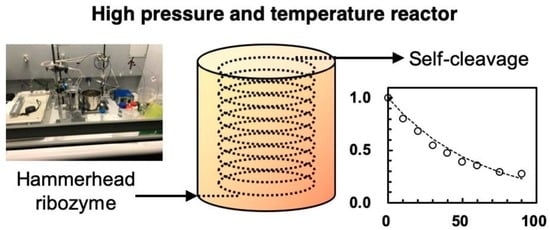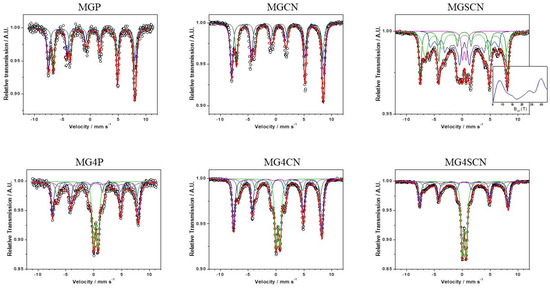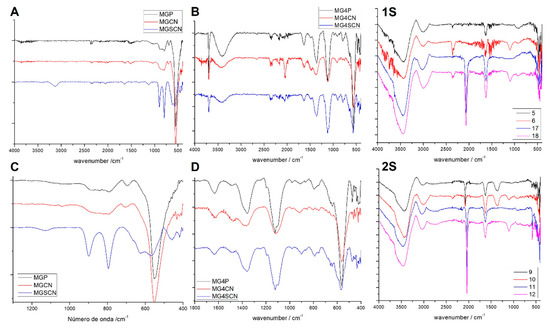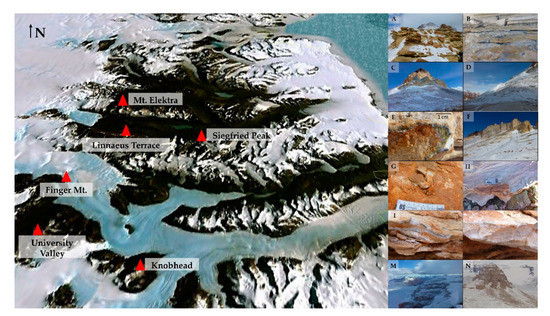What's on Board in the Journal Life
(Closed)
A topical collection in Life (ISSN 2075-1729). This collection belongs to the section "Origin of Life".
Viewed by 13363
Share This Topical Collection
Editor
 Dr. Paul Clarke
Dr. Paul Clarke
 Dr. Paul Clarke
Dr. Paul Clarke
E-Mail
Website
Collection Editor
Department of Chemistry, University of York, Heslington, York YO10 5DD, UK
Interests: origins of life; prebiotic chemistry; carbohydrate genesis; homochirality; minimal cell
Topical Collection Information
Dear Colleagues,
This is a Special Issue of high quality papers in open access form by the Editorial Board Members, or those invited by the editorial office and the Editor-in-Chief. Authors can submit their manuscripts through the Manuscript Tracking System at https://susy.mdpi.com/user/manuscripts/upload?journal=life. Manuscripts are published upon acceptance, regardless of the Special Issue publication date.
Dr. Paul A Clarke
Guest Editor
Manuscript Submission Information
Manuscripts should be submitted online at www.mdpi.com by registering and logging in to this website. Once you are registered, click here to go to the submission form. Manuscripts can be submitted until the deadline. All submissions that pass pre-check are peer-reviewed. Accepted papers will be published continuously in the journal (as soon as accepted) and will be listed together on the collection website. Research articles, review articles as well as short communications are invited. For planned papers, a title and short abstract (about 100 words) can be sent to the Editorial Office for announcement on this website.
Submitted manuscripts should not have been published previously, nor be under consideration for publication elsewhere (except conference proceedings papers). All manuscripts are thoroughly refereed through a single-blind peer-review process. A guide for authors and other relevant information for submission of manuscripts is available on the Instructions for Authors page. Life is an international peer-reviewed open access monthly journal published by MDPI.
Please visit the Instructions for Authors page before submitting a manuscript.
The Article Processing Charge (APC) for publication in this open access journal is 2600 CHF (Swiss Francs).
Submitted papers should be well formatted and use good English. Authors may use MDPI's
English editing service prior to publication or during author revisions.
Keywords
- Prebiotic Chemistry
- Origins of Life
- Astrobiology/Astrochemistry
- Detection of Life
- Protocells
- RNA World
- Evolution of Early Life
- Habitability
- Evolutionary biology
Published Papers (5 papers)
Open AccessArticle
A High-Pressure, High-Temperature Flow Reactor Simulating the Hadean Earth Environment, with Application to the Pressure Dependence of the Cleavage of Avocado Viroid Hammerhead Ribozyme
by
Kunio Kawamura, Mari Ogawa, Noriko Konagaya, Yoshimi Maruoka, Jean-François Lambert, Louis M. P. Ter-Ovanessian, Jacques Vergne, Guy Hervé and Marie-Christine Maurel
Cited by 3 | Viewed by 1387
Abstract
The RNA world hypothesis suggests that chemical networks consisting of functional RNA molecules could have constructed a primitive life-like system leading a first living system. The chemical evolution scenario of RNA molecules should be consistent with the Hadean Earth environment. We have demonstrated
[...] Read more.
The RNA world hypothesis suggests that chemical networks consisting of functional RNA molecules could have constructed a primitive life-like system leading a first living system. The chemical evolution scenario of RNA molecules should be consistent with the Hadean Earth environment. We have demonstrated the importance of the environment at both high temperature and high pressure, using different types of hydrothermal flow reactor systems and high-pressure equipment. In the present study, we have attempted to develop an alternative easy-to-implement method for high-pressure measurements and demonstrate that the system is applicable as an efficient research tool for high-pressure experiments at pressures up to 30 MPa. We demonstrate the usefulness of the system by detecting the high-pressure influence for the self-cleavage of avocado hammerhead ribozyme (ASBVd(−):HHR) at 45–65 °C. A kinetic analysis of the high-pressure behavior of ASBVd(−):HHR shows that the ribozyme is active at 30 MPa and its activity is sensitive to pressures between 0.1–30 MPa. The surprising finding that such a short ribozyme is effective for self-cleavage at a high pressure suggests the importance of pressure as a factor for selection of adaptable RNA molecules towards an RNA-based life-like system in the Hadean Earth environment deep in the ocean.
Full article
►▼
Show Figures
Open AccessArticle
Magnetite Synthesis in the Presence of Cyanide or Thiocyanate under Prebiotic Chemistry Conditions
by
Rafael Block Samulewski, Josué Martins Gonçalves, Alexandre Urbano, Antônio Carlos Saraiva da Costa, Flávio F. Ivashita, Andrea Paesano, Jr. and Dimas Augusto Morozin Zaia
Cited by 5 | Viewed by 3316
Abstract
Magnetite is an iron oxide mineral component of primitive Earth. It is naturally synthesized in different ways, such as magma cooling as well as olivine decomposition under hydrothermal conditions. It is probable magnetite played a significant role in biogenesis. The seawater used in
[...] Read more.
Magnetite is an iron oxide mineral component of primitive Earth. It is naturally synthesized in different ways, such as magma cooling as well as olivine decomposition under hydrothermal conditions. It is probable magnetite played a significant role in biogenesis. The seawater used in the current work contained high Mg
2+, Ca
2+ and SO
42− concentrations, unlike the seawater of today that has high Na
+ and Cl
− concentrations. It is likely that this seawater better resembled the ion composition of the seas of the Earth from 4 billion years ago. Cyanide and thiocyanate were common molecules in prebiotic Earth, and especially in primitive oceans, where they could act on the magnetite mechanism synthesis via Fe
2+ interaction. In this research, magnetite samples that were synthesized under prebiotic conditions in the presence of cyanide or thiocyanate, (both with and without artificial seawater), showed that, besides magnetite, goethite and ferrihydrite can be produced through different Fe
2+-ion interactions. Cyanide apparently acts as a protective agent for magnetite production; however, thiocyanate and seawater 4.0 Gy ions produced goethite and ferrihydrite at different ratios. These results validate that Fe
3+ oxides/hydroxides were possibly present in primitive Earth, even under anoxic conditions or in the absence of UV radiation. In addition, the results show that the composition of water in early oceans should not be neglected in prebiotic chemistry experiments, since this composition directly influences mineral formation.
Full article
►▼
Show Figures
Open AccessArticle
Endolithic Fungal Species Markers for Harshest Conditions in the McMurdo Dry Valleys, Antarctica
by
Claudia Coleine, Nuttapon Pombubpa, Laura Zucconi, Silvano Onofri, Jason E. Stajich and Laura Selbmann
Cited by 16 | Viewed by 4395
Abstract
The microbial communities that inhabit lithic niches inside sandstone in the Antarctic McMurdo Dry Valleys of life’s limits on Earth. The cryptoendolithic communities survive in these ice-free areas that have the lowest temperatures on Earth coupled with strong thermal fluctuations, extreme aridity, oligotrophy
[...] Read more.
The microbial communities that inhabit lithic niches inside sandstone in the Antarctic McMurdo Dry Valleys of life’s limits on Earth. The cryptoendolithic communities survive in these ice-free areas that have the lowest temperatures on Earth coupled with strong thermal fluctuations, extreme aridity, oligotrophy and high levels of solar and UV radiation. In this study, based on DNA metabarcoding, targeting the fungal Internal Transcribed Spacer region 1 (ITS1) and multivariate statistical analyses, we supply the first comprehensive overview onto the fungal diversity and composition of these communities sampled over a broad geographic area of the Antarctic hyper-arid cold desert. Six locations with surfaces that experience variable sun exposure were sampled to compare communities from a common area across a gradient of environmental pressure. The Operational Taxonomic Units (OTUs) identified were primarily members of the Ascomycota phylum, comprised mostly of the Lecanoromycetes and Dothideomycetes classes. The fungal species
Friedmanniomyces endolithicus, endemic to Antarctica, was found to be a marker species to the harshest conditions occurring in the shady, south exposed rock surfaces. Analysis of community composition showed that sun exposure was an environmental property that explained community diversity and structured endolithic colonization.
Full article
►▼
Show Figures
Planned Papers
The below list represents only planned manuscripts. Some of these
manuscripts have not been received by the Editorial Office yet. Papers
submitted to MDPI journals are subject to peer-review.
Tentative Title: Altitude and sun exposure shape mycobiome of cryptoendolithic lichen dominated communities in the McMurdo Dry Valleys, Antarctica
Authors: Claudia Coleine 1, Jason E. Stajich 2, Nuttapon Pombubpa 2, Laura Zucconi 1, Silvano Onofri 1, Laura Selbmann 1,3
Affiliations: 1 Department of Ecological and Biological Sciences, University of Tuscia, Viterbo 01100 Italy
2 Department of Microbiology and Plant Pathology and Institute of Integrative Genome Biology, University of California, Riverside, CA, USA 9252
3 Italian National Antarctic Museum (MNA), Mycological Section, Genoa, Italy










